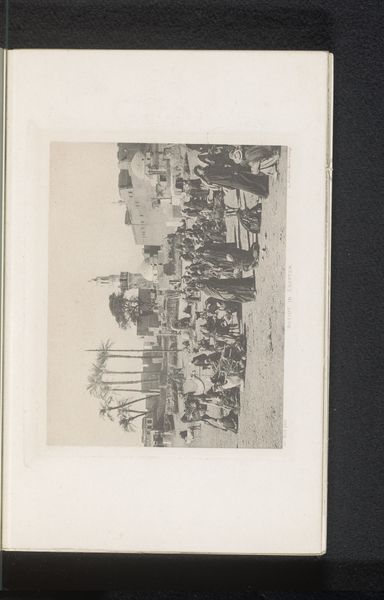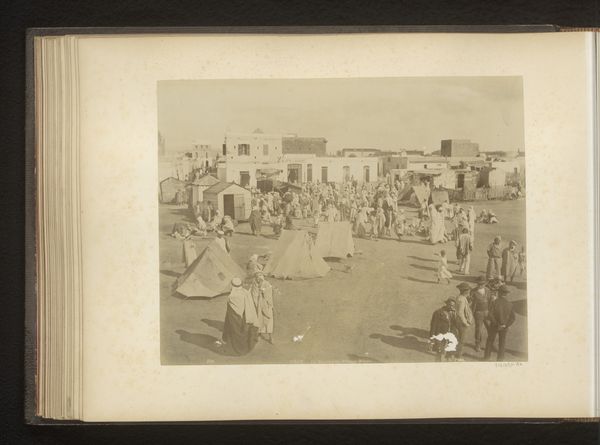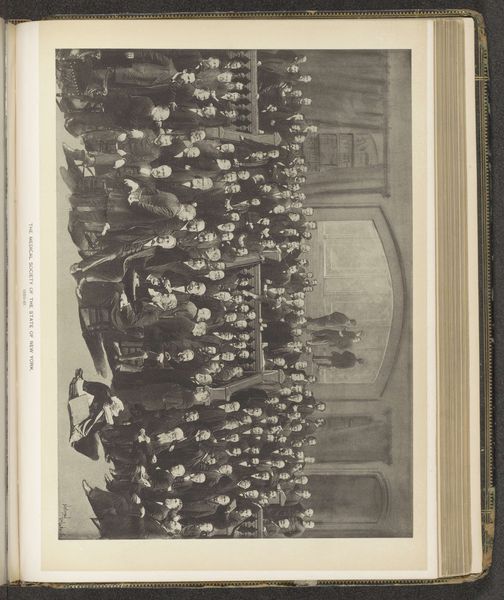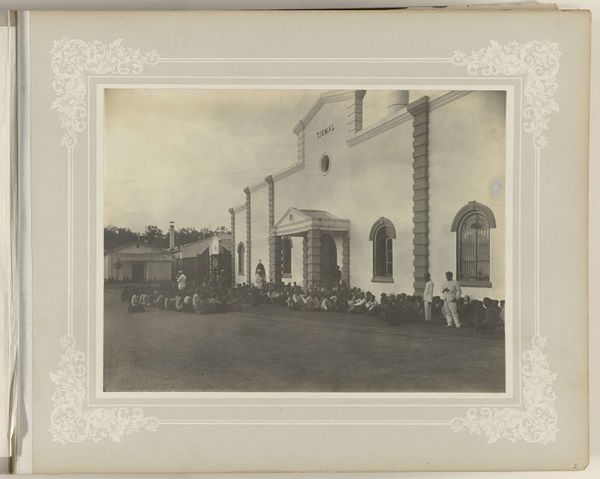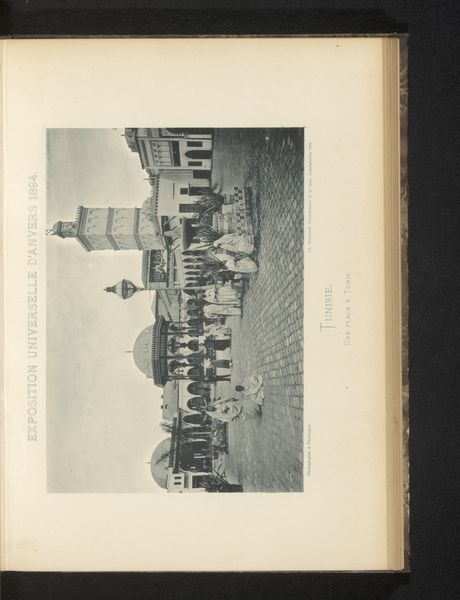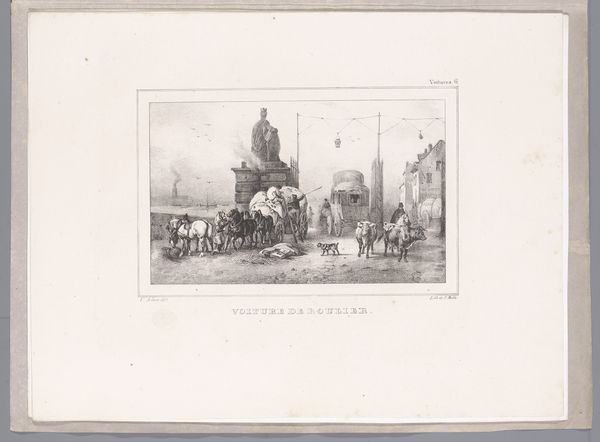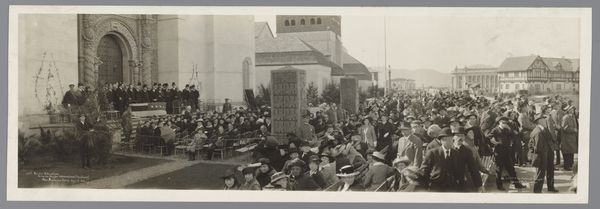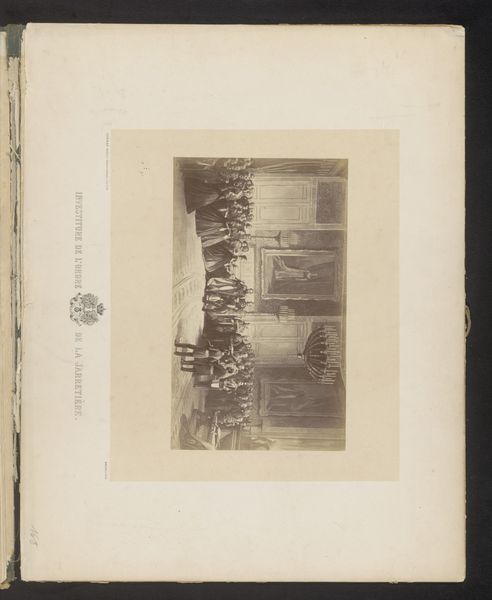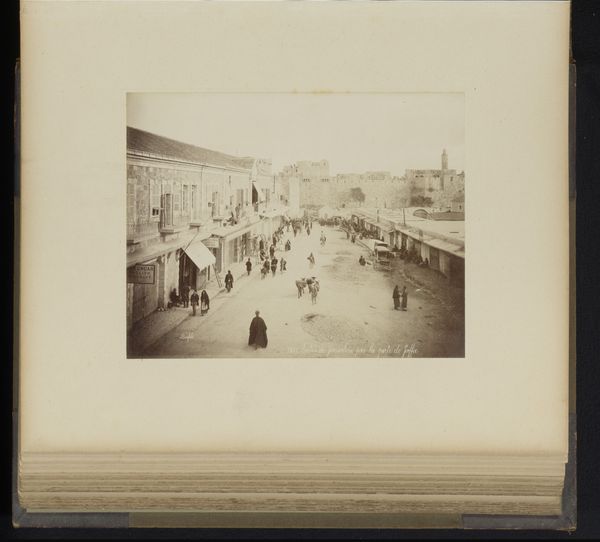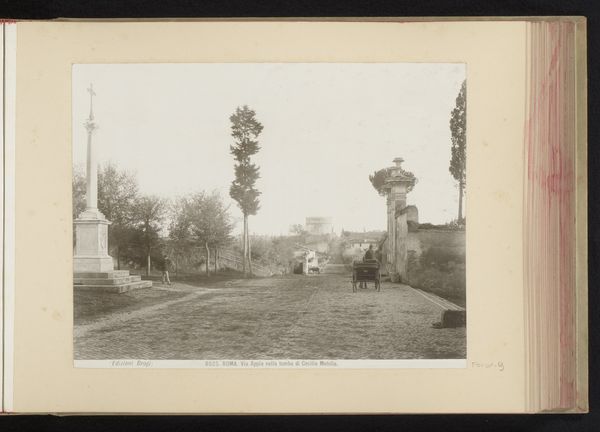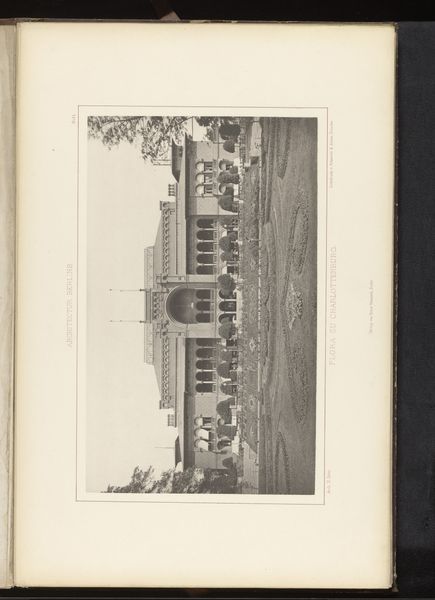
#
aged paper
#
toned paper
#
ink painting
#
pencil sketch
#
etching
#
underpainting
#
watercolour bleed
#
watercolour illustration
#
pencil art
#
watercolor
Dimensions: height 197 mm, width 251 mm
Copyright: Rijks Museum: Open Domain
Curator: This albumen print, "Gezicht op de Cimitero Monumentale en de Famedio in Milaan," by Edizione Brogi, dating back to around 1870 to 1900, really grabs my attention. Editor: It has this melancholic beauty to it, doesn't it? A stillness. The sepia tones feel like a veil draped over the scene, adding to the somber mood. What strikes you most about its context? Curator: I’m thinking about what cemeteries represent historically. Often, they mirror societal hierarchies. The elaborate structures behind the tombstones suggest wealth, power, status immortalized even in death. It's like a city of the dead, reflecting the values, or maybe the vanities, of the living. Editor: Absolutely. And that contrast—between the ostentatious architecture and the finality of death—is so potent. The Famedio, with its almost fortress-like appearance, becomes a monument to earthly achievement, starkly juxtaposed with the leveling effect of mortality. There is even a very sharp sense of class and race involved. Curator: It's like, "We can’t take it with us… but we can certainly build a fancy house next to where we're buried!" You know? There's a real tension in those striped buildings between the human desire to leave a mark and the great eraser that is time. The high contrast emphasizes the grand facade, almost like the subjects wanted to put on a show even in death. Editor: Definitely, the act of remembrance is powerful here, even political. The cemetery could be seen as a curated space, reflecting not just personal loss but also collective memory and the stories a society chooses to tell about itself. How and who is remembered – and forgotten – is as complex as how land ownership dictates life itself. It prompts some painful, inevitable questions about colonialism. Curator: Oh, exactly! And look at the play of light. The light is angled so directly across the monuments. How else might a cemetery landscape echo personal sentiment, even beyond all the history and societal framework we were talking about? Editor: The composition directs our gaze. Even the way light dapples through the trees seems to suggest an ongoing relationship between nature, memory, and the constructed monuments we build to ourselves. Considering what we know now about the environment and the ethics surrounding burials, what new interpretations might there be today, I wonder? Curator: It certainly has a haunting effect that whispers. Gives you a pause to consider mortality. Editor: Yes, the print serves as a poignant reminder. It is a space for contemplating life, legacy, and the grand narratives we weave in the face of our own ephemeral existence.
Comments
No comments
Be the first to comment and join the conversation on the ultimate creative platform.
